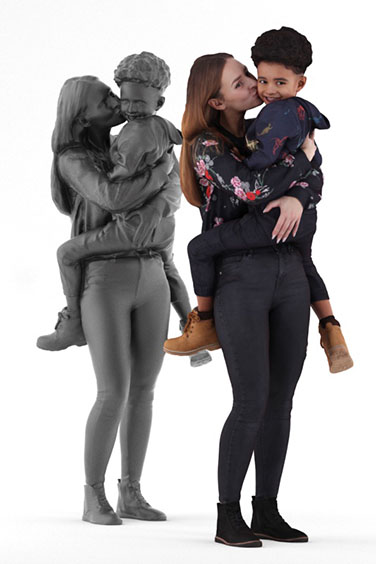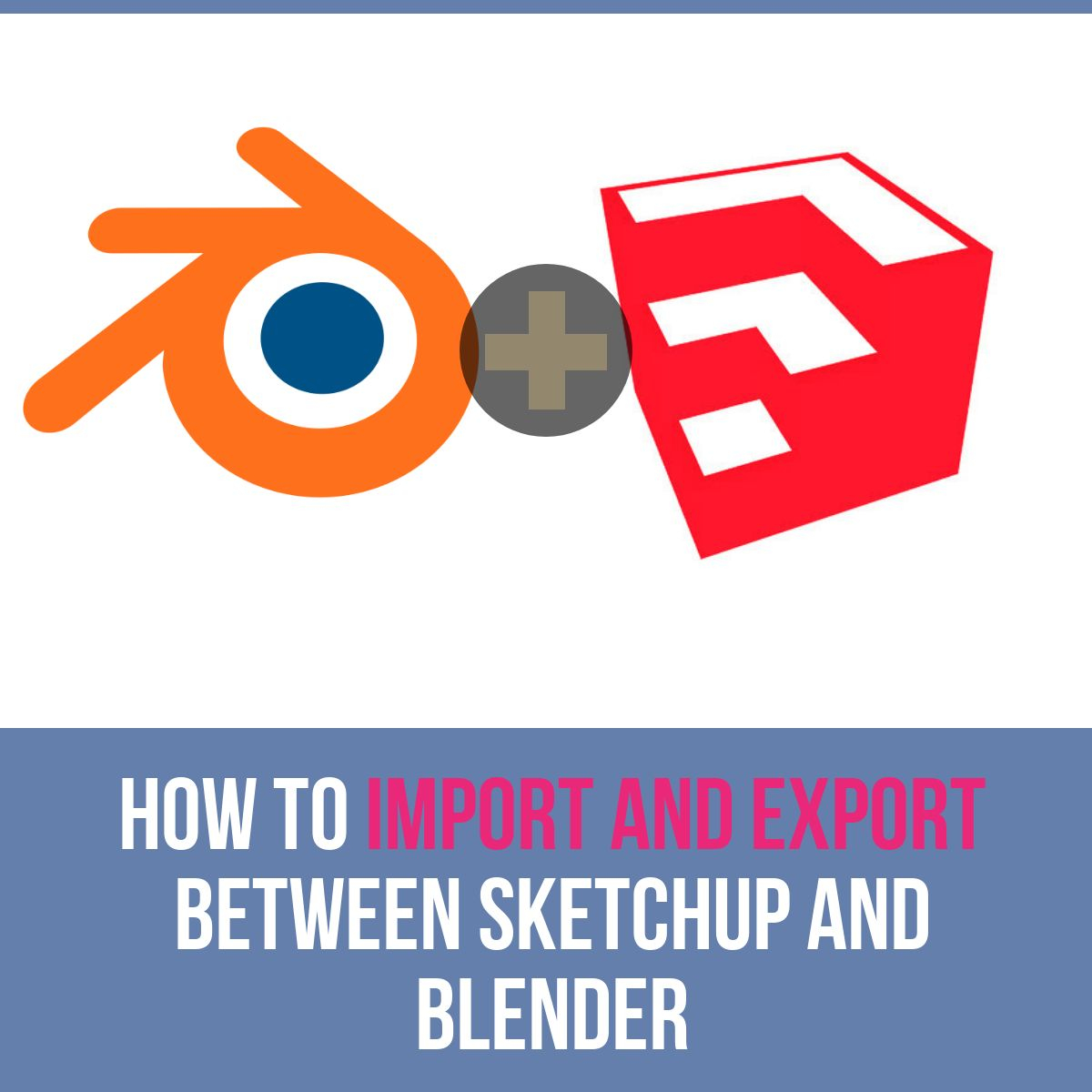- Sketchup To Blender Addon
- Sketchup To Blender Render
- Sketchup To Blender Converter
- Sketchup To Blender Workflow
- Sketchup To Blender With Textures
This tutorial talks about how to convert any 3D model to SketchUp using Blender, I’m going to use an .OBJ file, however the same principles apply to any format that can be imported into Blender for example .FBX or .3DS
First you need Blender. Download the installer (.msi) and install it; or download the .zip, uncompress and run, no installation required. You can find it here Blender Download
For this tutorial I will use a 3D model of the Wing chair designed by Hans J. Wenger. You can download it from the Carl Hansen website. Inside the ZIP file contains an .obj file. Chair Download

To texture the chair I will use a green fabric texture from the website TEXTURISE
SketchUp program (easy-to-use 3D design software that enables conceptual designs to be generated, viewed and shared quickly and easily) three-dimensional model file that may be placed within Google Earth or shared through the 3D Warehouse option. A collegue of mine has created a model with SketchUp and I want to import it into blender now. He created several formats from the model(.3ds,.dae,.obj) which I can import. However, I always do not seem to get the correct dimensions for the objects after the import. I am a long time Sketchup user that is slowly moving to Blender (the learning curve coupled with free time being the factor), I have an anthology of organic modeled cartoon characters that I intend to import into blender for rigging but I’m finding the mesh from Sketchup to be just horrible, too many tri’s and ngons. After running a cleanup and one of TIG’s plugins to convert tri’s to.
1. Open Blender and go to File > Import and select Wavefront .obj file.
2. In the dialog select the ch445.obj file.
Select obj. file
3. In the case of this CH445 3D model, it is out of scale, as you can see in the image having the grid as reference and knowing that every subdivision represents 1 meter, we have to rescale it.
4. The geometry is highlighted in orange. This means it is selected (if not, press key A, to select all). Next press key S to scale and type 0.01, then hit enter.
Rescale 3D model
5. Make sure you have Blender Render as render engine. Select the seat part of the CH445 (the most common way to select an element is to use Right Mouse Button).
6. In the shading panel you will see there are 2 materials, select the ch445_seat_hallingdal_110_TNT.
Select material
7. In the textures panel select the first slot (ka.001), and choose image / source.
Select first slot (ka.001) and choose image / source
8. This opens a dialog to select the image texture we want to assign to the chair’s seat. Select the fabric texture previously downloaded.
9. The texture is not visible so choose Texture mode on the viewport shading.
Choose Texture mode
10. Since the texture is not scaled properly as you can see in the image, jump to the step 18, if you want to correct this issue inside SketchUp by adjusting the texture image scale in the SketchUp Material Editor. If you want to correct the UVs scale inside Blender continue to step 11.
11. To correct the UVs scale we need to open a new View panel, look in the corner and drag up the Viewport handle.
Correct the UVs scale
12. In the Editor selection menu choose UV/Image Editor.
13. It should look like in the image below.

14. Switch to Edit Mode using the mode menu or use the keyboard shortcut: TAB.
4k video converter for mac. Switch to Edit Mode
15. Browse to image to be linked to the UV/Image Editor and choose hal110.png.
16. Hover cursor over the UV/Image Editor and hit A to select all, hit S key to select scaling and type 2 then hit Enter.
Sketchup To Blender Addon
Select all and scale
17. Switch back to the Object Mode using the mode menu or using the keyboard shortcut: TAB
18. Hit A key twice to select all. Trello for mac os.
Select all
19. Go to File > Export and select Collada (Default) (.dae).
20. Choose a location to save to and a name for the .dae file. Make sure to tick the boxes as in the image and hit the Export Collada button.
Sketchup To Blender Render
Choose location and save .dae file
21. Now open SketchUp and go to File > Import > 3D Model and select COLADA File (*.dae).

22. Choose the CH445 collada file and select the Import button.
Sketchup To Blender Converter
Import model
23. Insert on Origin point.
Sketchup To Blender Workflow
24. I added 2 planes that are going to act as light emitters in my render engine inside SketchUp.
Add 2 planes for light emitters
25. Run a render test. The 3D model looks faceted and not softened.
26. To soften edges use the AMS Soften Edges plugin for SketchUp.
soften edges
27. Raw render using Maxwell Render for SketchUp.
Thanks for reading
Victor
About the author:
Victor Hugo Hernandez is an architect specialized in architectural visualization.He is a member of the Swedish Association of Architects (Medlem i Sveriges Arkitekter), based in Lund, Sweden and currently working for Swedish architecture firm ‘White arkitekter’. See more of Victor’s work at HDZ 3d blog
Sketchup To Blender With Textures
| Name | SKP | OBJ |
| Full name | SketchUp Document | OBJ geometry format |
| File extension | .skp | .obj |
| MIME type | text/plain | |
| Developed by | Wavefront Technologies | |
| Type of format | ||
| Description | SketchUp program (easy-to-use 3D design software that enables conceptual designs to be generated, viewed and shared quickly and easily) three-dimensional model file that may be placed within Google Earth or shared through the 3D Warehouse option. | OBJ (or .obj) is a geometry definition file format first developed by Wavefront Technologies for its Advanced Visualizer animation package. The file format is open and has been adopted by other 3D graphics application vendors. |
| Technical details | The OBJ file format is a simple data-format that represents 3D geometry alone — namely, the position of each vertex, the UV position of each texture coordinate vertex, vertex normals, and the faces that make each polygon defined as a list of vertices, and texture vertices. Vertices are stored in a counter-clockwise order by default, making explicit declaration of face normals unnecessary. OBJ coordinates have no units, but OBJ files can contain scale information in a human readable comment line. | |
| File conversion | SKP conversion | OBJ conversion |
| Associated programs | Google SketchUp, IMSI TurboCAD Deluxe 18 | Wavefront 3D, CADRazor, Adobe Photoshop, LogiKal, UVMapper, LightWave 3D, Autodesk Maya, IMSI TurboCAD Deluxe, MeshLab, MAXON Cinema 4D, Smith Micro Poser, Autodesk AutoCAD. |
| Wiki | https://en.wikipedia.org/wiki/SketchUp | https://en.wikipedia.org/wiki/Wavefront_.obj_file |

